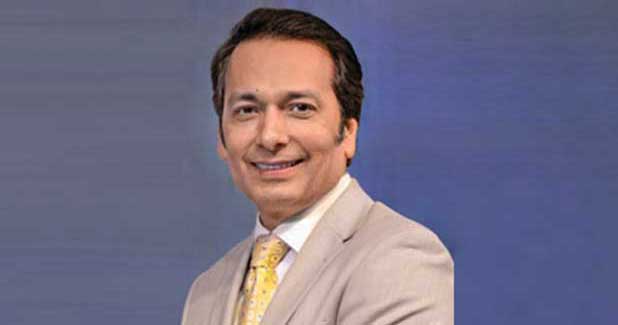Currently, 22 countries operate high-speed rail or bullet train networks, while another 16 are developing them at various stages of completion. India joined this global movement in 2017 with the launch of its first bullet train corridor on the commercially vital Mumbai-Ahmedabad route. The service was initially expected to begin in 2023, but land acquisition hurdles and political delays have pushed the operationalisation of a section of the corridor to 2027.
Yet, building a high-speed rail network is not merely about laying tracks. It is a symbol of an aspirational nation; one that seeks speed, efficiency and global competitiveness. On completion, the network promises faster intercity travel, reduced carbon emissions, and enhanced regional development.
India is already the world’s most populous country and its fastest-growing major economy. As it continues to upgrade rail, road and air connectivity, expanding the high-speed rail network becomes imperative. A 2020 report by Indian Railways identified 12 additional corridors for future development. After careful due diligence, construction must begin on operationally viable routes, given the scale of capital investment required. Our cover story in this issue makes a compelling case for expanding the bullet train network and identifies the most promising corridors for rollout.
September marked a major milestone in India’s journey towards the ‘One Nation, One Tax’ vision, with the rollout of the GST 2.0 framework. Lawyers Manish Mishra and Shikha Parmar of JSA Advocates & Solicitors present an in-depth analysis of its impact on the infrastructure sector, describing it as “an economic stimulus written into law.” As India scales up its renewable energy capacity, wind is back in focus. Amit Kansal, CEO and Managing Director of Senvion India, explains how the segment is now fully equipped to support the country’s march towards 500 GW of renewable energy capacity by 2030.
The maritime sector is also poised for resurgence. Jagannarayan Padmanabhan and Parul Singhal Garg of Crisil Intelligence outline India’s strategy to reclaim its historical position as a leading maritime power. In an exclusive interaction, Rear Admiral (Retd) Vipin Kumar Saxena, CEO of Swan Defence and Heavy Industries, shares how their Pipavav facility—following a major overhaul—is now ready to play a key role in shipbuilding and MRO.
Introduced in January 2016, the hybrid annuity mode (HAM) remains a cornerstone of India’s road development strategy. New modifications are raising benchmarks and ensuring more equitable distribution of national highway projects, writes Anand Kulkarni of Crisil Ratings. While transportation and energy remain priority areas for the National Bank for Financing Infrastructure and Development (NaBFID), the institution is also working to enhance municipal bond underwriting and scale partial credit enhancement through special-purpose vehicles. Samuel Joseph Jebaraj, Deputy Managing Director at NaBFID, shares insights in an exclusive interaction.
Turn the pages to explore more stories in this issue. Wishing you and your loved ones a Happy and Prosperous Diwali.
FlashNews:
Northeast to Anchor India’s Inland Waterways Revival, Says Shipping Minister Sonowal
Noida International Airport Boosts Regional Access with UPSRTC Bus Partnership
It’s India’s Turn to Take Global South’s Aspirations to Stars, Say Space Leaders at ISpA Conclave
IndiGo Links Madhya Pradesh’s Indore Commercial Hub with Rewa White Tiger Territory
INOXGFL Group and KP Energy Seal Renewables Partnership for Pan-India Wind and Solar Projects
Green Ferry Infrastructure on Yamuna to Transform Delhi Cruises and Transport: Sonowal
Indian Railways Unveils Cement Freight Policy with Flat Rates, New Containers, and Bulk Terminals
India’s Spacetech Startups Propel Sector Towards $45 Billion Growth, Says Jitendra Singh
THINK Gas Signs Long-Term LNG Supply Agreement with Shell Energy India
Navi Mumbai Airport to Launch on Dec 25 with 23 Daily Flights; IndiGo, Akasa, Air India Lead Rollout
Gati Shakti Vishwavidyalaya and DRDO Sign MoU to Develop Smart Tech Solutions for National Security
NHAI Launches Fortnightly Updates for Projects Under Bidding
India Expands Energy Security with Landmark US LPG Deal
MoS Pemmasani Calls for Global Cybersecurity Unity at WTDC‑25
Minister Puri Highlights $68 Billion Indo‑Japan Energy Partnership in Tokyo
India Maps 224 GW Pumped Storage Potential as Policy Push Gains Momentum, Says Manohar Lal
IndiGo Expands Long‑Haul Network with Direct Delhi-Manchester Dreamliner Service
India’s Century‑Old Infrastructure Cooperative Pioneer, ULCCS, Secures ICA’s Global Heritage Recognition
Air India to Resume Non-Stop Flights to Shanghai from February 2026
ECONOMY & POLICYRailways & Metro Rail
Accelerating India’s High-Speed Future
October 17, 2025November 17, 2025


